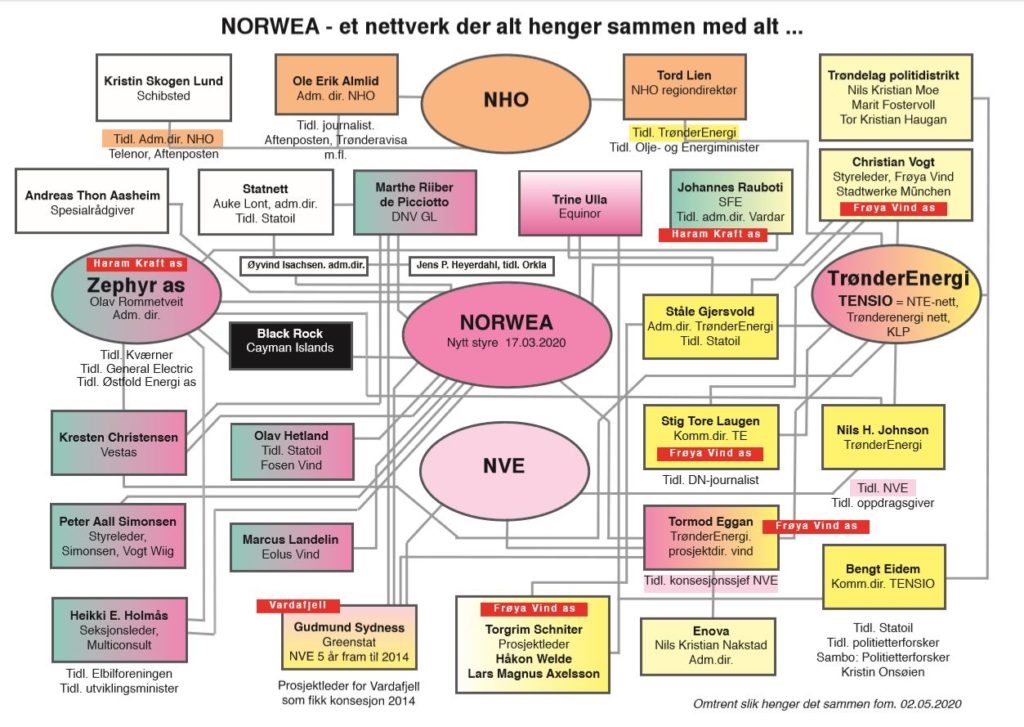
By Knut Langeland, former journalist in Bergens Tidende
To the board of Norwea
Hi, My name is Knut Langeland, I am a former journalist in Bergens Tidende, now a newly retired pensioner. I am one of the many, who wake up every morning with a big lump in the stomach, afraid of what the next move from the wind power industry may be. I am one of those who believe nature has self-worth, like nature. I am one of those who appreciate and value nature, but who could never be able to put a monetary price or value on nature. Nature is not a product, it is not negotiable. I am one of those who therefore find it very disappointing that some, without shame, can say that wind power is profitable. For me, this is an expression of a heartless and ignorant approach to a big question in our time. Those who express themselves like this say that nature has no value.
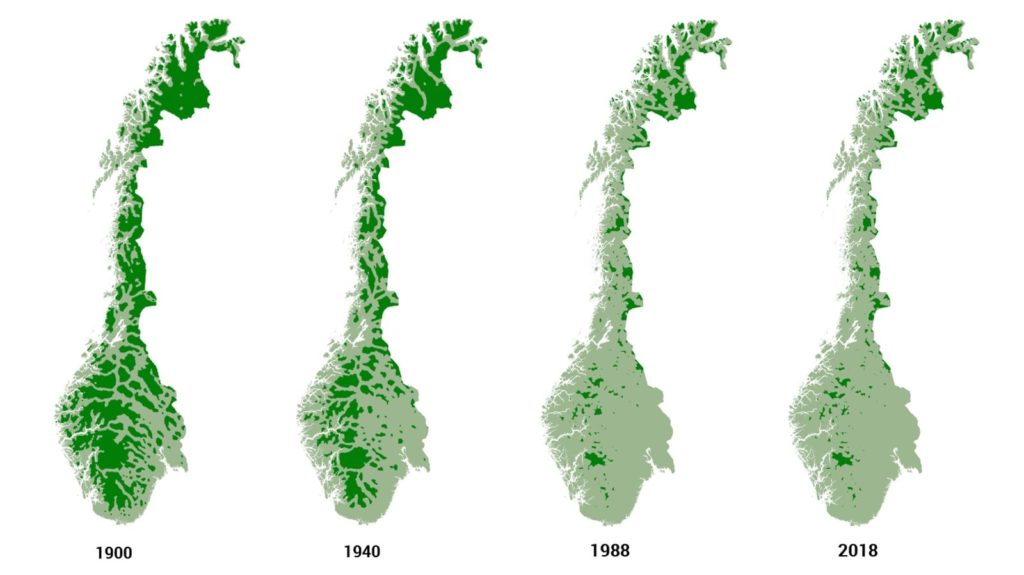
I have lately taken the time to read some of what you present on your website, even though it is painful. I really had to brace myself. In fact, being exposed to glossy pictures of the idea of industrializing Norwegian untouched nature is a strain. It is not possible to understand that what is most important to me in our time to stop, to others seems to be the most important of all to go through with. But I have lived long and experienced enough to understand that it comes down to money, not idealism.
I can now see Andreas Aasheim in Norwea, slightly triumphant, thinking that the discussion about infrasound from wind power can put death once and for all. This was found in a Finnish survey. He about it. I, on my part, thought that the whole absurd idea of wind power in our finest and most valuable nature would lie dead when the UN Nature Panel Report came last year. The report which instructed us to take care of what we have left of untouched nature, and which, to the fullest, indicate that we should go to great lengths to repair ruined nature.
Watch the NRK documentary: The Battle against the wind power turbines
Nothing happened. What I was naive enough to think was a so-called game-changer, changed nothing. The wind power industry has, as far as I have registered, completely ignored the report. Therefore, I had no illusions when the Norwegian Institute of Natural Research (NINA) recently came up with its report, with the following conclusion: The best thing we can do for the climate is to leave nature at peace.
The next thing I see from nature is the grotesque image of powerful machines digging into the marsh (the one that stores carbon) at Buheii in Kvinesdal. With nesting eagles close by. Heartbreaking, you ask me, and I am constantly wondering how the industry you so eagerly defend can act so cold and insensitive. More on that later. Andreas Aasheim made a large number of the earlier mentioned Finnish study on infrasound.
Let’s be honest enough to say that this may not be the most important argument in the big debate about wind power. Should we continue to be honest, I have confidence that even you who have made a living from dressing mountains and coast with ever more rugged turbines, in addition to all the infrastructure that accompanies them, you must admit in thoughtful moments that wind power comes at a cost. In many cases an overly high cost. I will take them as systematically as I can manage:
1. The idea itself. Industry in the Norwegian mountain and coastal landscape. Isn’t there anything that tells that something is wrong when you see mountain peaks become blasted and flat? When an old forest is cut? When swampland gets punctured? When large roads cut through the landscape? When lakes are filled? When huge wind turbines rise and the landscape all of a sudden changes forever? Doesn’t it hurt somewhere, or is the project so high-pitched that it trumps and suppresses all such feelings?
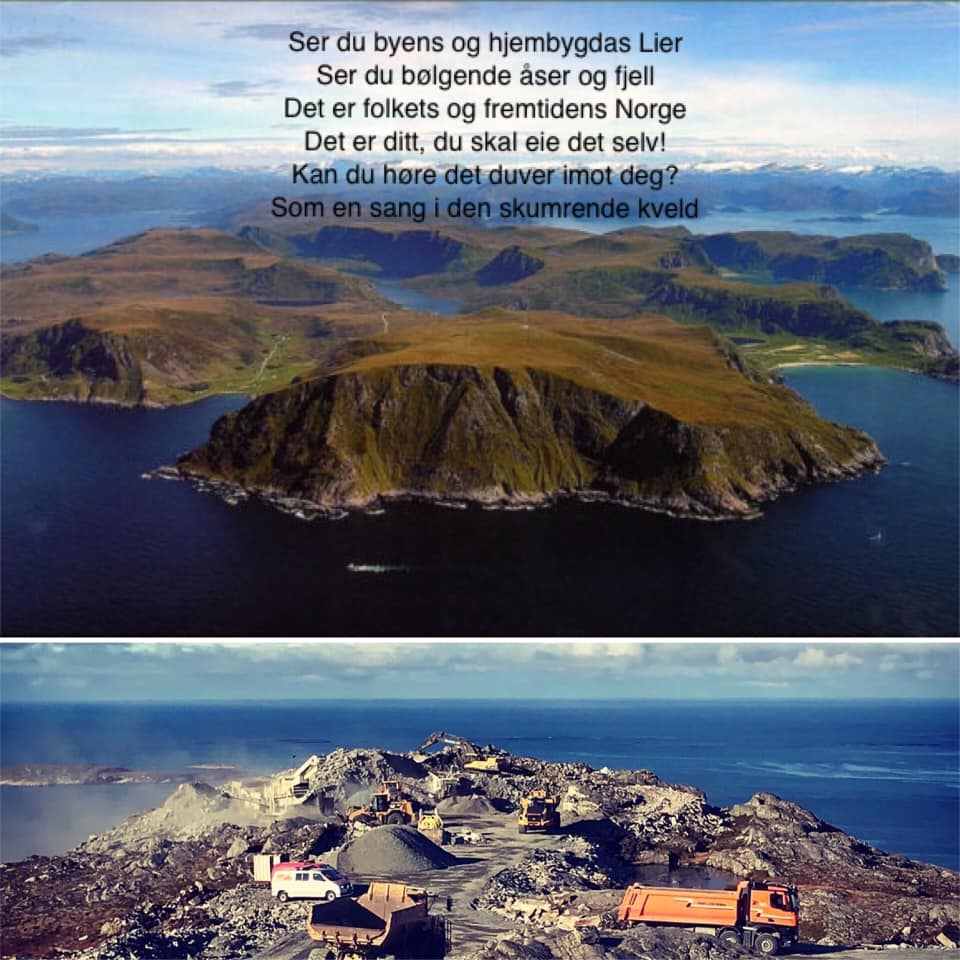
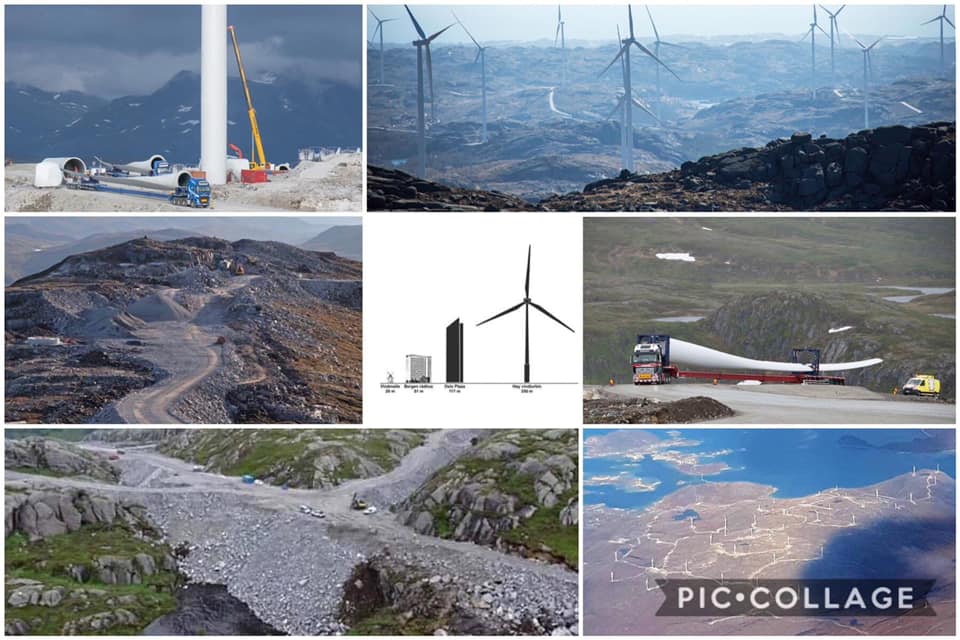
2. Bird death. Some people on my side of the debate call the turbines for meat grinders, others call them for killing machines. I find that they take the lives of very many birds, bats, and insects, and so both characteristics can justify. The image of one mauled eagle is enough to make me uncomfortable. On Smøla, more than a hundred have been injured and lost their lives, and people supporting the wind power industry does not seem to lift an eyebrow. It is well documented that both existing and planned wind turbines often are located in the corridors for bird migration. For me, and many with me, it is incomprehensible that this is allowed to happen. What kind of new knowledge is needed for the knowledge to have concrete consequences? Then I see that Jens Ulltveit Moe and other wind power supporters are pointing out that cats kill more birds than wind turbines. As if a biological executioner also justifies a mechanical one (it is also true that cats would face trouble when it comes to eagles,
capercaillie, goose, and other big birds).
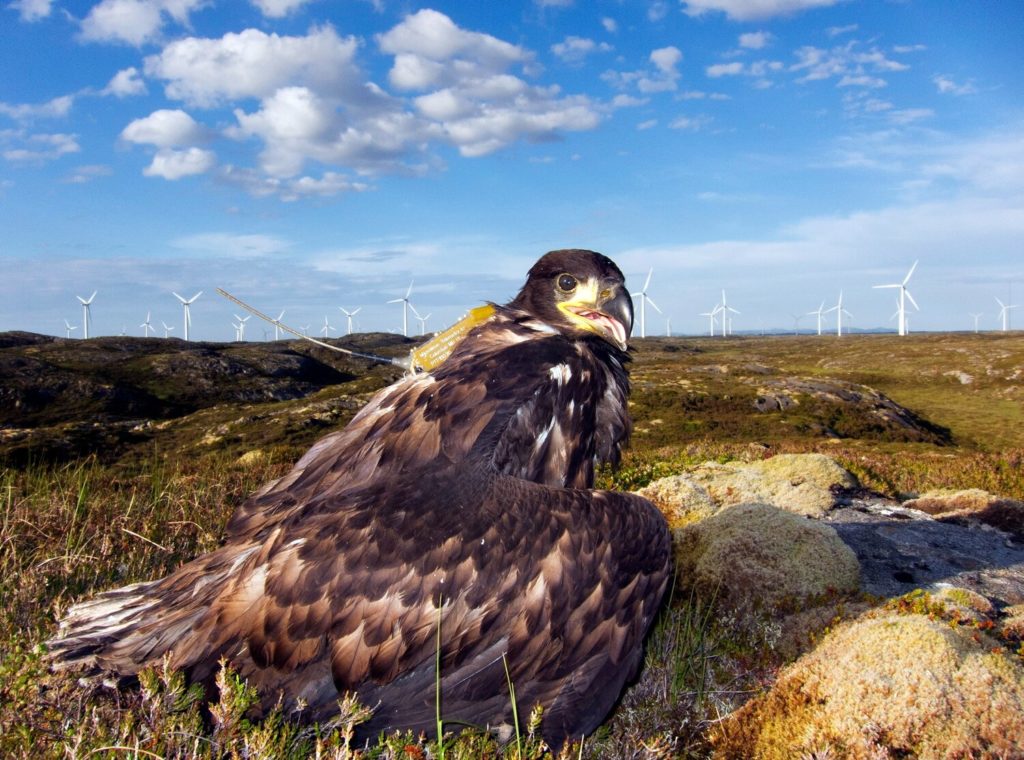
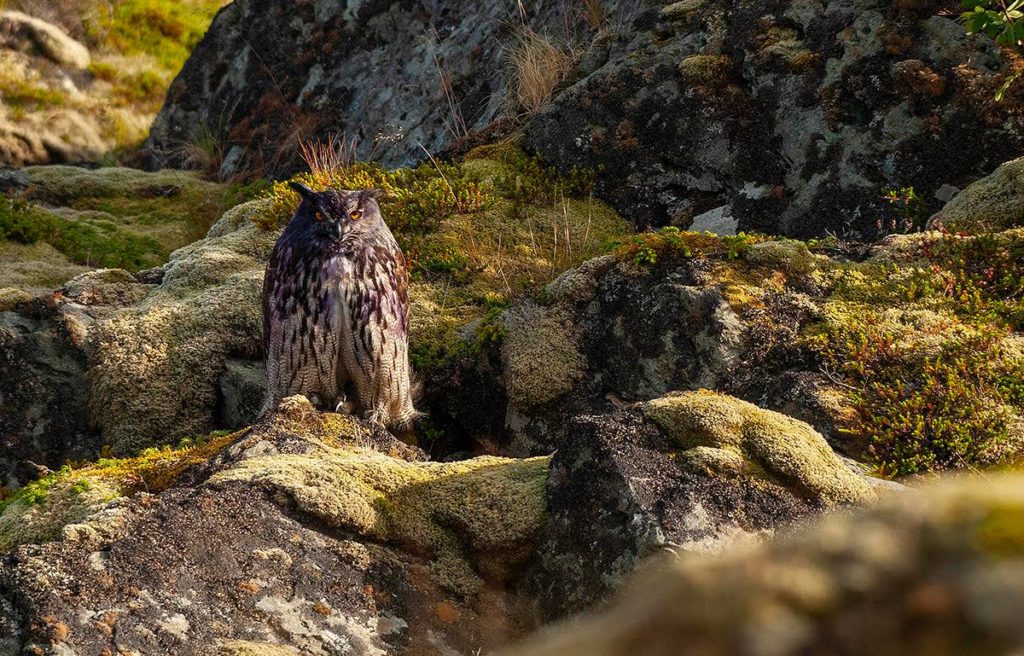
NRK Documentary: Angels with blood on the wings
The biggest natural intervention in Norwegian history is in the making, as power companies want to build thousands of wind turbines along the coast. Large areas of untouched nature are in danger of becoming an industrial area. Coastal people are protesting new neighbors to fill the horizon, and biologists are scared we are destroying our last wilderness.
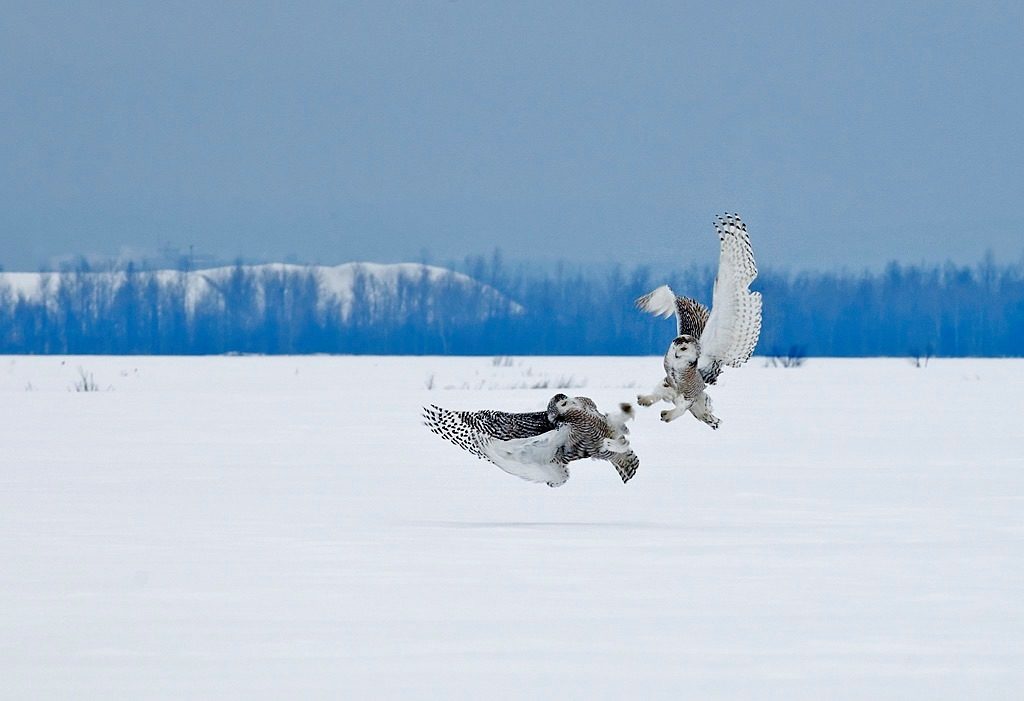
3. Tearing communities apart. The wind power industry has for years kept a low profile, few people in local villages and communities in Norway have known what was going on. Knowing that the developments you are planning would arouse conflict as soon as people gain some knowledge of the scope. I am among those who have not become aware of this wreckage of Norwegian nature, until quite recently. By at large, the industry has success, not only in developing wind power but also in setting people in many communities up against each other.
4. Reduced quality of life. People love their near nature. I guess that even those who sit on the board of Norwea have close nature that you use and are attached to. When this nature becomes destroyed by massive and irreversible interventions, people react. This nature can not be compensated by offering a cabin or a clubhouse. Money does not give back our nature.
5. Health. Many people experience living with the inertia of the wind industry for years in doubt. Will it be developed, or will nature prevail? Do you, the people responsible, understand the kind of stress this represents? Do you understand that people can get sick of this? Is it conceivable that the industry in any given situation may find that saying, “it’s enough now.” We withdraw the application ”. If not otherwise, so as to be able to look at oneself in the mirror?
6) Land use. I see on your website that you try as best to minimize the area that a wind turbine seizes. You like to talk about per mille. It would have been nice if you related these per mille to other per mille. How many parts of Norway’s land area make up all existing towns and cities and industrial areas? What we have built during maybe 1000 years of civilization? And how many thousandths constitute the wind industry in Norwegian nature? The existing and the intended. So that people have an understandable benchmark to look at. It is an indisputable fact that wind power development is the largest collapse of Norwegian nature ever. And it will be implemented in just a few decades. Why not be honest about it, rather than wrap it in per mille? And no matter how few per mille we are talking about, it is unattractive to those who get their nature ruined.
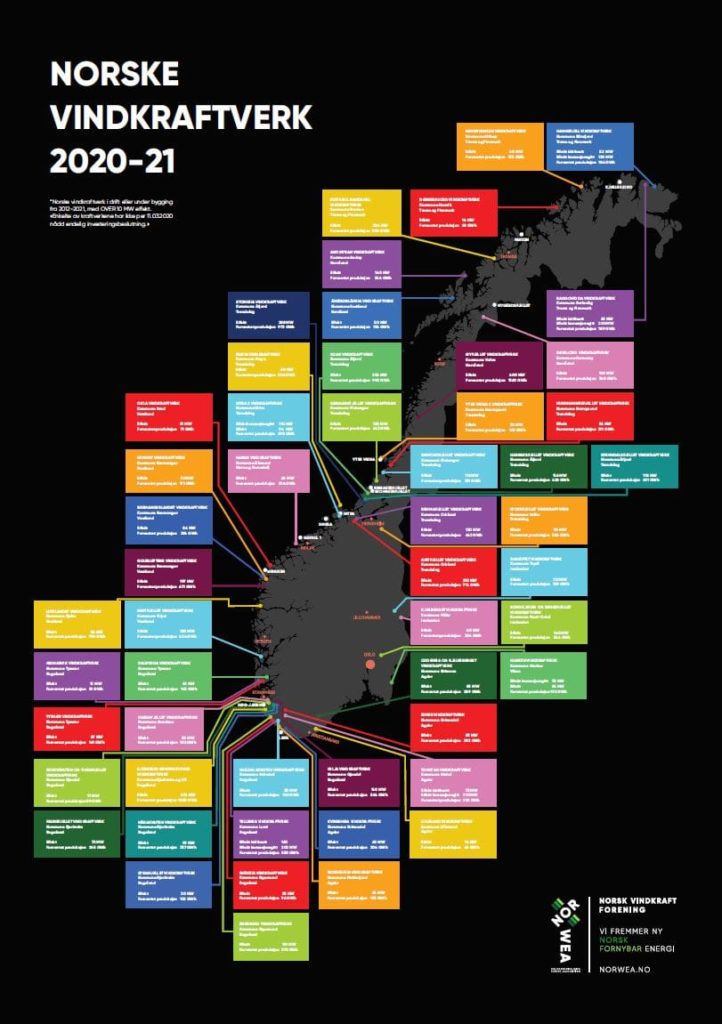
7) Wildlife. I see that on the homepage you try to give the impression that the animal does not suffer, that they may even feel better about the wind industry than outside. Hunters provide utterly disingenuous comments like the hunt has become easier with the road up the moor. As if it’s a point that hunting should be easy! Isn’t it rather a point that the animal should have a fair chance of having a good time and escape? That hunting should be hunting, not slaughter?
8) Shadow cast and ice throw. I can’t see that ice throw is mentioned in one word as a problem on your website. On the contrary, skiing is encouraged. Isn’t that irresponsible? And shade! On the website, you give space, even prominent space, to a resident who claims that shadow-casting resembles dancing angels ?! I have seen some shadow-casting in practice. In my experience, the comparison with angel dance is both provocative and disrespectful.
9) Landscape. Wind turbines are high and they will become even higher. They roam on the coast, and they roam in the mountains. In Western Norway, where I live, the mountains are typically between 800 and 1000 meters. A 200-meter high wind turbine on top of this is visible over long distances. 50 of them will be totally dominant. From where I wander, the view is many miles. It is these mountains that must be the perspective when we talk about visual pollution. People should decide for themselves what is visual pollution for them. 50 flashing turbines towards the horizon, if it is 50 kilometers away, they are still 50 flashing turbines in sight. Intrusive visual pollution during the daytime and at night.
10) Travel. On your home page, you refer to a study that apparently states that the wind industry does not have a negative impact on tourism. If you seriously believe this, I suggest that you ask people who make their living from tourism, it is they who have to live with the consequences. Approaching the Sognefjord, set with wind turbines on both sides of the fjord. Is that what tourists want to see? I refuse to believe that even you believe that.
11) Microplastics. As soon as a wind turbine comes into production, it is exposed to weather and wind. The microplastics on the wings spread in the wild and enter the circulation flow, often in our water sources. Is this a problem, or is it like the infrasound, just an alleged problem? At the same time, what about the large quantities of oil that the turbines depend on to float. Critical if this should release into the wild.
12) Cleanup. A wind turbine plant has a lifetime of 25-30 years. At best. Afterward, it should clear. Can you promise that the industry itself is going to sue for this? Or will it be loaded onto landowners / municipalities? And will you come to clean properly and in an environmentally safe way? Remove every bit of it? Including the concrete on which the turbines are placed on top? Do you have the money that this requires? About a million per turbine, according to my sources. How do you think of reversing the landscape? What about the flattened mountaintops? And what about the wings? Should they be buried, as tons of wings are today?
13) Tax havens. We have seen on TV that much of the money from wind power companies tend to end up in tax havens. I know that this should not be a legal problem, but it is perhaps a moral question? Is it a little distressing, perhaps, that the culture of greed is so explicitly expressed in an industry that otherwise gives the impression of being a fundamental record of our common future, not just the future of wind power owners?
You argue on the homepage in a way as if the nature that lies within the plan area for a plant is still untouched. At the same time, you argue that where large hydropower developments have been completed, nature is already so devastated that it can just as well be used for wind power. The law says something else. The law says that it is especially important where nature is influenced by technical interventions, to take care of the pockets of untouched nature that are attentive. I know of areas that are close to dams and construction roads, which still have the appearance of being untouched. Small idylls. This way, it can never be in a wind power plant area.
The wind industry is very problematic, and I think you are well aware of it yourselves. It would have been liberating if you just could admit a little bit of this. I myself am an eager user of nature. Upon a mountain, out on a fjord, I have my very best moments. Here I find tranquility and peace of mind, room for thought, and time for reflection. Here I collect surplus. Instantly, I am very aware that I am just a guest in this realm. It belongs to those who have their home there and who, if they had a voice, would have protested loudly and energetically. For someone like me, it is almost impossible to understand that some seem to have no regrets or afterthoughts when it comes to industrializing this nature.
For me, it is self-evident that we cannot repair the climate, by destroying yet more nature, and the power we need does not have to come from the wind. There are many other ways to secure our energy supply than building wind power. Upgrading of hydropower, solar, geothermal energy, but not least energy efficiency. There are different perceptions about the potential, but can you not, before laughing at the claim, admit the negligible impact of the Norwegian wind power development has on the global climate?
The UN has listed 17 Sustainable Development Goals. More renewable power is one of them, taking care of nature and natural diversity is another. Wind power made from wind turbines in undisturbed nature is not compatible with the conservation of natural diversity. Collaboration is the 17th and final goal of the goals. How much do you feel that the wind industry has contributed to cooperation? Do you think the industry has been open, transparent, and collaborative? Do you think the processes have been good and democratic? Do you think the system has worked satisfying? Or can we have a point, we who think that this has happened very much in the closed rooms and not in the public domain? Did you invite to dialogue before they sought out the landowners and got one foot in the door? My experience is that the need for dialogue first arose when the resistance started to become troublesome. Have you at any time been honest to the public when it comes to the enormous interventions that the wind industry represents? I count myself as an enlightened human being. With me, the wind industry went way under the radar for years. I don’t feel conspiratorial, but I think it was a carefully designed strategy.
In the same way, it was of course carefully conceived to put nature interests out of play by subordinating land use when it comes to wind power energy law, not planning and building laws. It is very provocative that in this way the governing bodies can override the democratic rules of play to their own advantage.
As a result, a powerful uprising is about to set in the population. People feel fooled, led behind the light, manipulated, exploited at worst. If you, as representatives of the industry, together with the governing authorities, do not take this revolt seriously, I am afraid that it may get ugly. Taking the uprising seriously will not only involve listening to the protests, but it will also be to put the brakes on and show moderation. You may find your wind industry excellent in all matters, but I think you also should go through the problematic aspects of wind power. Let them be expressed also on your own website. That would add credibility. Today the webpage appears as propaganda. Easy to see through propaganda.
My last prayer: Can you stop using the term “windmills” and “wind parks”? Even if you have succeeded in exporting these offenses far into the ranks of opponents, they are still just as misleading and false. Thanks in advance!





40 Comments
Pingback: ดูดวงยูเรเนียน
Pingback: Motvind Norge reports the management and owners of the Storheia and Roan wind power plants in Fosen - Bergensia
Pingback: goatpg
Pingback: Buy Dexilant Australia
Pingback: มวยพักยก
Pingback: magic mushroom spores australia
Pingback: quik
Pingback: เทรดทอง
Pingback: youtube
Pingback: fifa55
Pingback: ธรรมนูญครอบครัว
Pingback: โบท็อกซ์
Pingback: abacus link
Pingback: เทคนิค แทงบอลผ่าน เว็บบอลสเต็ป ใช้แล้วได้ผลจริง
Pingback: Tor Hosting
Pingback: nshtou
Pingback: เล่นสล็อต ได้เงินทุกวัน เว็บตรง pantip
Pingback: Diyala Info
Pingback: huayyim กับ LSM99 เว็บไหนตอบโจทย์การแทงหวย
Pingback: รับทำประตูรั้วสแตนเลส เชียงใหม่
Pingback: Giriş yapmak
Pingback: จดแจ้งเครื่องสำอาง
Pingback: กระดาษสติ๊กเกอร์ความร้อน
Pingback: Mostbet
Pingback: เว็บหวยออนไลน์เชื่อถือได้ มีลักษณะอย่างไร?
Pingback: FORTUNE DRAGON
Pingback: white rabbit mushroom
Pingback: gubet
Pingback: mushroom-gummies
Pingback: Chicken Road gambling game
Pingback: pc build hyderabad
Pingback: เว็บตรง สล็อต บาคาร่า
Pingback: 1xslots argentina
Pingback: more info
Pingback: vegus666
Pingback: เช็คสลิปโอนเงิน
Pingback: clothing manufacturer
Pingback: พลาสติกปูพื้นก่อนเทคอนกรีต
Pingback: พรมรถยนต์
Pingback: โบลเวอร์ kruger